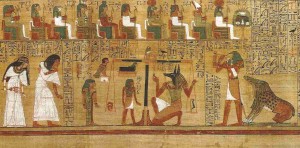 During the past few years Enid Newberg and I have worked to unravel some of the complexities of the modern concepts of soul. It started with two years of immersing ourselves into how astrologers, philosophers, psychologists and others view the concept of soul. We delighted in examining our own assumptions against the backdrop of other perspectives. Then we started a three-course program exploring the developments of soul – and its relationships with astrology – over the centuries. All of this has clarified and emphasized how important these concepts are for today’s astrologers since are several “astrologies of soul” out there.
During the past few years Enid Newberg and I have worked to unravel some of the complexities of the modern concepts of soul. It started with two years of immersing ourselves into how astrologers, philosophers, psychologists and others view the concept of soul. We delighted in examining our own assumptions against the backdrop of other perspectives. Then we started a three-course program exploring the developments of soul – and its relationships with astrology – over the centuries. All of this has clarified and emphasized how important these concepts are for today’s astrologers since are several “astrologies of soul” out there.
We are now in the third rotation of our program and the next installment, E520B Calling the Soul’s Transformations, begins at the end of January 2016.
Our work with the soul fell naturally into three rough categories: 1) character, 2) calling, and 3) karma:
Soul as character comes from the ancient Indian and Western depictions of qualities we exhibit in our daily life and includes the relationship between soul and body and between being living and being dead. Astrology and modern psychology both delve into this realm of soul.
Soul as calling recognizes the deep connection between our individual lives and the larger world and universe in which we live. This connection between the individual and a larger universe is the basis of astrology. But this intimate connection is often obscured in modern living. Today’s dictionaries define an avocation as a hobby or minor occupation that is your passion as opposed to how you earn your living. Vocation has been defined as our main life’s work, mission and purpose, as well as a just a trade or profession. We need both words to capture our experience when the world needs us, when it calls to our soul and we respond.
Soul as karma explores an eternal soul that incarnates from lifetime to lifetime. In most Eastern religious views, reincarnation is a given. In the West, the idea has not been mainstream, but it has resurfaced again and again throughout the centuries. The most recent expression in astrological practice has its origins in the late 1800’s and the rise of different types of spiritual, evolutionary astrologies.
 Calling and the Soul’s Transformations
Calling and the Soul’s Transformations
This winter and in this essay our interest is in the second category, “calling.” Instead of relating solely to one’s personal karma or evolutionary enterprise, our birth chart also signifies what the universe needs from you. There are different perspectives we can take to interpret what the chart is telling us.
Soul as an Expression of the Intention of our Universe
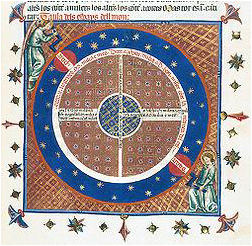 Perhaps the natal chart signifies the larger karma of our universe and part of this becomes your “calling”. This is not a new notion although it is an increasingly relevant one. We find this attitude in the medieval depiction of vocation and providence and extends to Dane Rudhyar’s depiction of the natal chart as a “blueprint”, a set of instructions from the universe.
Perhaps the natal chart signifies the larger karma of our universe and part of this becomes your “calling”. This is not a new notion although it is an increasingly relevant one. We find this attitude in the medieval depiction of vocation and providence and extends to Dane Rudhyar’s depiction of the natal chart as a “blueprint”, a set of instructions from the universe.
Perhaps one’s “calling” is expressed directly through a particular planet in an individual’s natal chart, a “planetary daimon”. There are several ways to find a chart’s planetary daemon based on determining what planet has a singular strength and prominence in a natal chart. But this poses other questions: What is the relationship between the planets and the higher dimensions of reality – or soul? Is there a soul dimension (symbolically or literally) above the planets and stars, disclosing a divine dimension of being?
Soul and a Hierarchical Cosmos
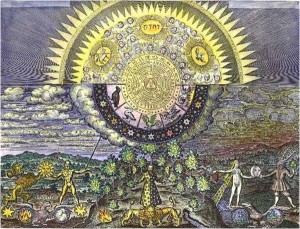
Ascending “into heaven” through the planets and stars has long been used literally and metaphorically to depict the soul’s journey toward divinity. It appears in major works of the western tradition from the ancient world up to the Renaissance.
We begin with Plato who, as in many other areas of western thought, set the agenda. In his Timaeus he posed a “likely story” about the conscious creation of the heavens and our earth and a division of the universe into the refined and orderly above and the coarse and irregular below. This helped to give rise to a cosmos through which we have a place in the universe and a spiritual calling to transcend the earthly and enter the divine.
A few centuries later the Hellenic/Egyptian Corpus Hermeticum used astrology’s planetary symbolism to depict the ascent and decent of the soul. Cicero’s “Dream of Scipio”, found in a famous commentary by Macrobius (5th C. CE), is another example. In this depiction of a dream by a Roman military leader, his even more renowned grandfather takes him high atop the cosmos and explains the celestial order and his place within it.
Dante’s sublime Divine Comedy, with its poetical depiction of Paradise, incorporates the ascent of the soul with a grand vision of the universe and the workings of divine providence. Any modern western astrologer who practices “spiritual astrology” should be familiar with this antecedent from many centuries ago.
Alienation and Reconciliation – or is it Salvation?
We can ask, “What is the relationship of the soul to the divine?” But perhaps the matter is more urgent: “If soul and the divine are of the same nature, why are we so messed up, and what can we do about it?”
To answer these questions, we must talk in greater depth about the World Soul and its relationship to individual souls. And we need to consider the nature of the soul’s return to its origins.
 “Neoplatonism”, as articulated by the third century philosopher Plotinus and his followers, is not a formal school. It is more of an attitude toward human existence and the upward and downward life of the human soul. Neoplatonism posits that soul has become alienated from its true nature. The path toward regaining its nature is through philosophical inquiry and contemplation.
“Neoplatonism”, as articulated by the third century philosopher Plotinus and his followers, is not a formal school. It is more of an attitude toward human existence and the upward and downward life of the human soul. Neoplatonism posits that soul has become alienated from its true nature. The path toward regaining its nature is through philosophical inquiry and contemplation.
Neoplatonism uses an elaborate metaphysical and physical architecture. It begins with an account of the unity of the cosmos that contains any particular physical or nonphysical entity in existence. The superabundance of “the One” gives rise to the realm of Ideas that are also timeless but have greater multiplicity and diffusion. This in turn gives rise to Soul, both cosmic and individual.
Soul, whether cosmic or individual, contains multiplicity, motion and duality. This is because soul encompasses desire and thought together with the objects of desire or thought. And these are all in flux. This is expressed through linear, sequential time that is also marked by the movements of the planets. At soul moves farther from its origins, it becomes entangled in bodily and physical environments that are unpredictable and subject to incoherent change.
For Plotinus and his student Porphyry, the way of return is the way of wisdom or gnosis. In India they call this path the way of jnana or wisdom. Porphyry’s student Iamblicus added the ways of bhakti or devotion and of karma or ritual. Here are the origins of the theory and practice of “theurgy”, God-working, that employs devotional principles. Theurgy was part of the conventional polytheistic religious practice of that era.
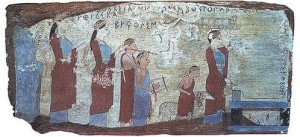 The Gnostic schools of contemplation and wisdom competed with catholic Christianity in the late antique world. Gnosticism is also more an attitude than an organized movement. It combines a pessimistic version of Neoplatonism with a reading the Hebrew and Christian scripture whereby the God of Genesis continually works to subvert people so they do not rediscover their own divine nature. But we do not have to be seduced by a lesser god. Through the practice of gnosis or wisdom, we can make a direct relationship with the divine. The Gnostic view of creation may sound odd to those schooled in monotheistic religions, but it does account for the problem of suffering and evil in God’s world.
The Gnostic schools of contemplation and wisdom competed with catholic Christianity in the late antique world. Gnosticism is also more an attitude than an organized movement. It combines a pessimistic version of Neoplatonism with a reading the Hebrew and Christian scripture whereby the God of Genesis continually works to subvert people so they do not rediscover their own divine nature. But we do not have to be seduced by a lesser god. Through the practice of gnosis or wisdom, we can make a direct relationship with the divine. The Gnostic view of creation may sound odd to those schooled in monotheistic religions, but it does account for the problem of suffering and evil in God’s world.
These ancient viewpoints have great insight and power but they are not our only possibilities.
Art, Magic, and Alchemy
Instead of a top-down pattern for the world and soul, we can turn the universe on its side. We can incorporate features of the physical world to emulate the divine, to bring down the divine, to eventually transform the physical world and ourselves into divinity.
What is the soul’s relationship to artistic contemplation and expression? Does art provide another avenue for the soul’s achievement of its proper place in the universe?
Art provides ways of visualizing and articulating what is ultimately beyond sight and beyond words. Up to the modern era, art has been closely linked with ritual and magic. For this reason, over the centuries art’s inherent connection to the natural and sensual world has gratified and inspired but has also aroused distrust. Throughout Western history, this seems particularly true of music.
Our understanding of ceremonial magic is distorted by the anxious idea that ceremonial magic brings one closer not to the divine, but the diabolical. In modern times ceremonial magic has become trivialized. From the appearance of Mickey Mouse as the Sorcerer’s Apprentice in Fantasia to the adolescent depiction of magic in the Harry Potter series, it’s difficult for us to approach ceremonial magic with an open mind. When practiced properly, however, ceremonial magic can enhance soul.
Sympathetic magic is based on the idea of a correspondence between different worldly substances or activities. This correspondence can involve the nature and activity of the planets and stars. This is how you can invoke the planet’s activity through an earthly correlative. You can use music and dance, mental activity, a gem or color or even small statue of a god that corresponds to the planet.
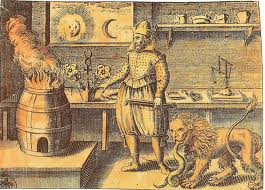 Alchemy is the process of working with metals and soul to purify both and uncover their true essence. Alchemy is also an object of distrust and condescension. Alchemy is not just primitive pre-chemistry or unwitting psychological projection but a practice of working with soul and the material world simultaneously. Alchemy can bring together sulphur and quicksilver, inward and outward gold and silver, and the Sun and Moon above us. Indeed alchemy views the purified and completed soul as the child of the Marriage of Sun and Moon. Alchemy too has additional astrological applications.
Alchemy is the process of working with metals and soul to purify both and uncover their true essence. Alchemy is also an object of distrust and condescension. Alchemy is not just primitive pre-chemistry or unwitting psychological projection but a practice of working with soul and the material world simultaneously. Alchemy can bring together sulphur and quicksilver, inward and outward gold and silver, and the Sun and Moon above us. Indeed alchemy views the purified and completed soul as the child of the Marriage of Sun and Moon. Alchemy too has additional astrological applications.
Marsilio Ficino and Many Dimensions of Electional Astrology
Let us now leap into 15th century Italy and the life and times of an important transitional figure, Marsilio Ficino.
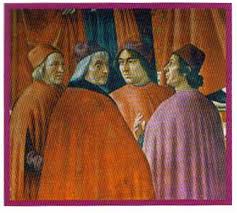 Ficino combined traditional astrology and medicine with the Neoplatonic doctrines of the soul’s journey toward the divine. Yet his era also carried a new focus, the unique role of humanity in the structure of the cosmos. As individuals we are our own mini-universes and we are able to bring ourselves closer to our planetary natures, to bring ourselves closer to divinity. We can live more in accord with the planets, embodying what the planets signify in the different areas of our lives, and live a more harmonious life right here. We don’t have to be anywhere else.
Ficino combined traditional astrology and medicine with the Neoplatonic doctrines of the soul’s journey toward the divine. Yet his era also carried a new focus, the unique role of humanity in the structure of the cosmos. As individuals we are our own mini-universes and we are able to bring ourselves closer to our planetary natures, to bring ourselves closer to divinity. We can live more in accord with the planets, embodying what the planets signify in the different areas of our lives, and live a more harmonious life right here. We don’t have to be anywhere else.
Ficino connected ritual, electional astrology and soul-work. We can take the powers of the planets and seek an arrangement that brings their benefit down upon us, to arouse their sympathy with our endeavors in life. Ficino looked at the planets as music, substances, and activities. He merged astrological symbolism with ancient mythological themes.
Ficino’s doctrines helped deepen a tradition of astrological magical practice that continues today. And yes, a proper practice of electional astrology enhances soul. Ficino’s has also influenced contemporary psychology to shed some of its emphasis on pathology and look more at the whole person and the many longings of the human soul.
Soul in the Modern Era
The “scientific revolution” changed much of this. As it came into ascendance, the soul was increasingly relegated to the hypothetical. Yet there were interesting developments that deserve our careful attention.
 Coincident with the decline of religious art was the increasing depiction of nature itself as en-souled. Here we can see the influence of the landscape art of China – and Asian thinking in general – with the Western romantic and transcendentalist movements in the 19th century.
Coincident with the decline of religious art was the increasing depiction of nature itself as en-souled. Here we can see the influence of the landscape art of China – and Asian thinking in general – with the Western romantic and transcendentalist movements in the 19th century.
In the 20th century, continental philosophy returned the concept of soul as the foundational notion of “being-there”. By definition this implies a world in which it exists, it is “there”. You can find a strong connection between this notion and the practices of body and mind mandalas Indian/Tibetan Buddhist tantra.
 In the late 1900’s, James Hillman expanded Jung’s concept of soul into an entity that shows itself in literature and psychology, history and culture, and architecture and the construction of a room. In a manner similar to the Chinese art of feng shui, Hillman shows how physical and interpersonal environments express or repress soul. This is not the transcending Soul of the ancients but a Soul that anchors us to earth and to our most personal experiences. But this Soul is not ego. Hillman has contributed much to modern renderings of Soul.
In the late 1900’s, James Hillman expanded Jung’s concept of soul into an entity that shows itself in literature and psychology, history and culture, and architecture and the construction of a room. In a manner similar to the Chinese art of feng shui, Hillman shows how physical and interpersonal environments express or repress soul. This is not the transcending Soul of the ancients but a Soul that anchors us to earth and to our most personal experiences. But this Soul is not ego. Hillman has contributed much to modern renderings of Soul.
More questions than answers
Looking into the nature and range of soul raises important questions. What is the relationship between us, our bodies and our physical and interpersonal environments? Are we part of the world or are we fundamentally different from it?
Astrology is compatible with many approaches to spirituality and religion. But are there dimensions of ourselves that astrology does not touch? Are these dimensions Soul or above Soul?
There is a further dimension of soul that will be explored in the third course in the Spring. Does the soul survive personal death and return? How and why may a Soul incarnate into a different body and lifetime? This further dimension of soul and astrology will take us to ancient India, the Western rediscovery of the dimension of experience beyond lifetimes and its lasting influence on modern astrology.

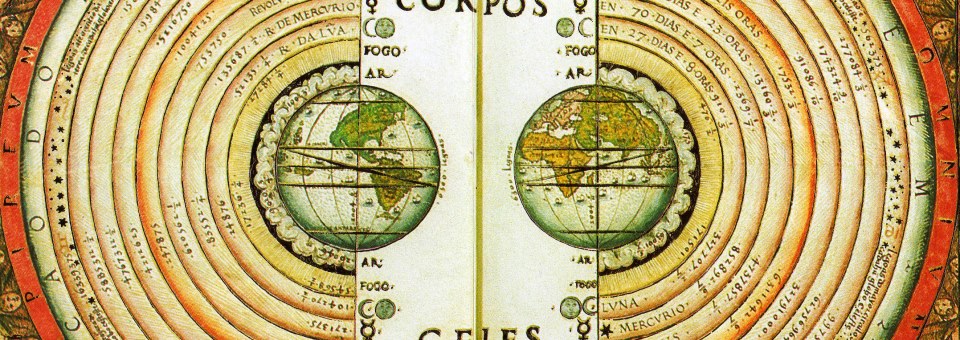
I have been very curious in finding my souls purpose.
Mercedes Calcaño recommended this website to me. Thus far my eye has taken in nothing but beauty and intelligence here. You certainly know how to present a professional and aesthetic feel to your writing.
My first real trip into Astrology was during my youth, when my best friend and I would sleep under the stars. It was there when I first realized that the ‘Heaven’s are telling the Glory of God.’ Shortly afterwords I received a telescope for my birthday. Seen the craters on the moon with more detail but the planets and the stars remained so far away, and unfortunately, so did my interest fade into the morning light. However, throughout my life I would pick up various astrology books in the passing but the spark has yet to be rekindled, but like a distant star, that draws closer through the merging of worlds, I feel that one day the fire will return. Perhaps my exact Sun/Neptune conjunction will lead me back to such exploration so to speak; who knows really. Keep up the good work Joseph, I am looking forward to re-visiting your site soon.
Jason